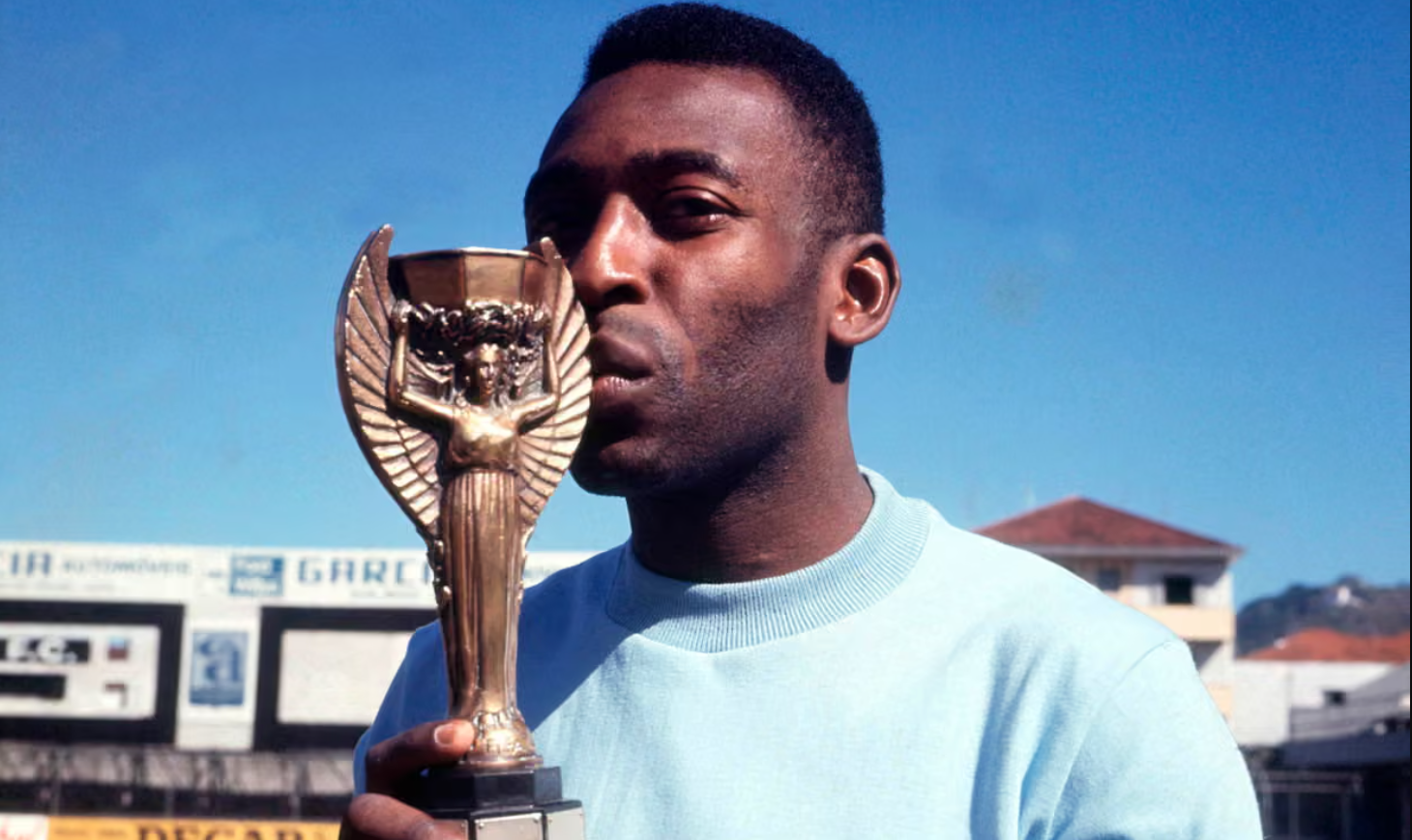
Pelé’s Performance at 4 world cup football
- Rashel Ahamed
- October 25, 2025
- Sports, Biography
- Cristiano Ronaldo, Fifa World cup, Maradona, Messi, Pele, World cup, Zidane
- 0 Comments
The only player to win three World Cups, Pelé — this one fact alone elevates his achievements to another level.
Although, as an active player, he won two World Cups, what exactly happened in the other one? Do we all know that story? Did he find success because he played in Brazil’s great team, or did he turn a good team into a great one?
In today’s write-up, we’ll try to know about Pelé’s performances in the World Cups.
Pelé’s contributions in the World Cups at a glance
1958 World Cup
Playing in a World Cup for a team like Brazil at just 17 years old is no small feat. In that tournament, he started with an assist in the group stage. In the quarter-final against Wales, his lone goal sent Brazil into the semis. With that, he became the youngest (17 years 239 days) goal-scorer in World Cup history. He then scored a hat-trick against France in the semi-final, becoming the youngest (17 years 244 days) to ever score a World Cup hat-trick. In the final, he scored twice more. He won both the Silver Ball and Silver Boot awards and was also named the tournament’s Best Young Player.

To understand what it means to win a World Cup at 17, let’s look at some statistics of other greats:
- Maradona played his first World Cup at age 22.
- Ronaldo Nazário joined the World Cup squad at 18 but couldn’t make the starting XI because of Romário and Bebeto.
- Zidane entered France’s main team at 22 and first appeared in a World Cup XI at 26.
- Messi got into the World Cup squad at 19 but didn’t play all matches.
- Cristiano Ronaldo played his first World Cup at 21.
All the above are legends. These facts aren’t to belittle anyone — they simply show how special it was for Pelé to play for Brazil’s main team at 17, and how brilliantly he seized that opportunity.
1962 World Cup
Entered this tournament recognized as the best player in the world, and everyone expected it to be his tournament. Against Chile, he assisted the first goal and scored a dazzling second after dribbling past four defenders.

But he got injured in the match against Czechoslovakia and missed the rest of the tournament.
1966 World Cup
The 1966 Brazil team was considered one of their strongest ever — featuring Garrincha, Gilmar, Santos, Jairzinho, Tostão, Gérson, and Pelé. But they shocked everyone by exiting in the group stage after just three matches.
In the first match against Bulgaria, he scored, but brutal fouls by Bulgarian defenders injured him, forcing him to miss the next game. Brazil lost that match to Hungary.

Coach Vicente Feola surprised everyone by playing him in the last group match against Eusébio’s Portugal, even though Pelé hadn’t fully recovered. That match is often called the worst of the ’66 World Cup. Pelé was fouled so viciously throughout the game that he left the field injured and announced his retirement afterward. Later, Eusébio and the entire Portuguese team formally apologized to Brazil.
1970 World Cup
Initially, he wasn’t supposed to play in the 1970 World Cup. But at the start of 1969, he was brought back into the squad and scored six goals in six qualifying matches.

In this tournament, Pelé played mainly as a playmaker. In the final against Italy, he scored the opening goal and finished the tournament with 4 goals and 7 assists, winning the Best Player of the Tournament award. He also lifted the Jules Rimet Trophy permanently for Brazil.

Final Thoughts
Many have won the World Cup — but what makes Pelé truly great?
Since the first World Cup in 1930, Brazil had always been a favorite. Yet before Pelé’s arrival, they went 28 years without winning it. After Pelé retired, it took them another 24 years to win again.
Pelé’s peak years, age-wise, were during the 1962 and 1966 World Cups — but in both, he was forced out early by injuries after brilliant starts.
Another thing to note: in football, a “generation” usually performs well for two consecutive World Cups. But he played well in four and shone brightly in the two he completed. Most impressively, he adapted perfectly to different generations of teammates.
After each World Cup, an All-Star Team is announced. Pelé made it into two such teams (1958 and 1970) — twelve years apart. No other player has ever achieved that over such a long span.
And when you realize that Pelé scored 12 goals and made 10 assists in 14 World Cup matches, scored in two finals, and netted in four different World Cups — your respect for him is bound to grow even more.
Pelé’s legacy goes far beyond his three World Cups — he redefined football with skill, grace, and timeless brilliance. His impact still inspires generations worldwide.


